One of Northern Spain’s top tourist destinations, San Sebastian, or Donostia as the Basques call it, is located on the Bay of Biscay just a few miles from France. It’s best known for its great beaches, but there are also pretty churches and other attractions in San Sebastian to see, including an international film festival.
It is not only the capital but also the soul of Spain’s Basque community. The Basques have their own language and culture, one that is different from Spain, but no less rich than what’s found elsewhere in Spain. It’s almost like getting two countries for the price of one.
Arguably, it is best known for its gastronomic prowess, boasting, per capita, more Michelin-star decorated restaurants than anywhere else. Here, food is not just sustenance; it’s an art form, a cultural cornerstone, and a way of life. From the mouthwatering pintxos to the culinary masterpieces crafted by internationally acclaimed chefs, San Sebastian’s dining scene is a journey through the senses.
But there are more things to do in San Sebastian than just culinary delights. Its pristine beaches provide the perfect backdrop for relaxation. At the same time, the city’s historic architecture and Basque traditions showcase a heritage that goes back centuries.
19. Basilica de Santa Maria del Coro
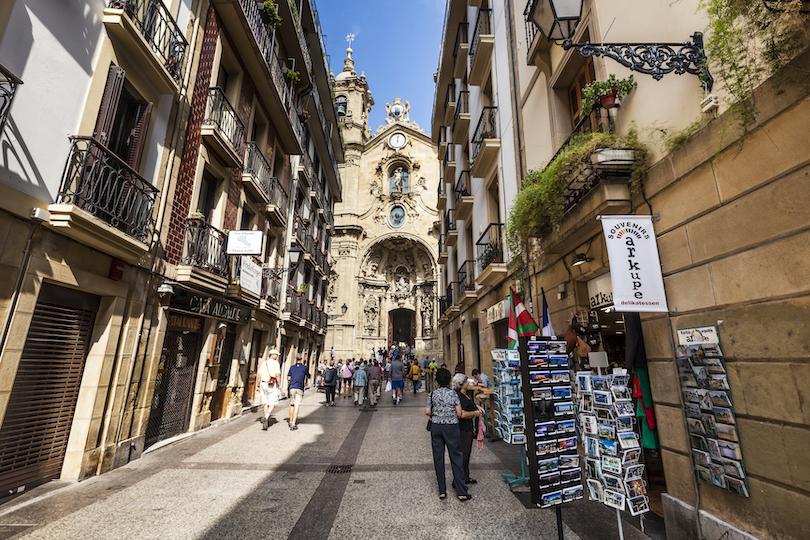
The Basilica de Santa María del Coro is a magnificent symbol of San Sebastian’s rich history and grandeur. Located in the ‘Parte Vieja’ area, this massive religious structure dominates the old town of San Sebastian with an elegant façade full of intricate detailing.
Construction spanned several decades, starting from the 1770s and incorporated a blend of architectural styles, including Baroque, Rococo, and Neoclassical elements. Replacing an earlier church destroyed by fire, it was built to enhance San Sebastian’s religious and cultural development.
Externally, the basilica features several stunning features, including arches, bell towers, carvings and clocks. While ornate altars, exquisite stained glass windows, and a magnificent pipe organ – best experienced on a guided tour – can be found inside.
18. San Sebastian’s City Hall
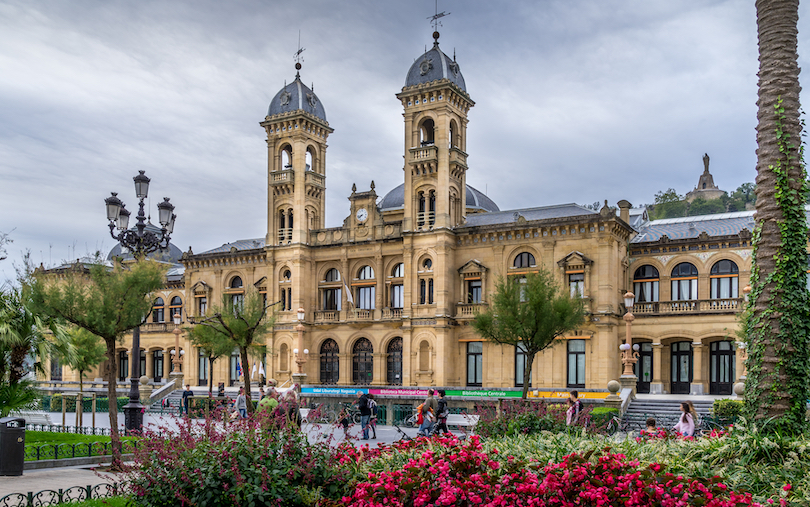
San Sebastian’s City Hall is a significant landmark in the picturesque Old Town.
The neo-baroque structure, built during the late 19th century, boasts an exquisite façade with columns, intricate sculptures, a clock tower, a majestic dome and other decorative elements.
Previously a casino, the building’s history is now more closely tied to the city’s development, having served as the administrative hub for San Sebastian for over a century.
Visitors can explore the grandeur of the City Hall’s interior, which houses several ornate rooms often used for official ceremonies and events. The building also features a beautiful courtyard.
The City Hall is an impressive sight by day. But it is also worth visiting at night when its illuminations give it a golden glow.
17. Ondarreta Beach
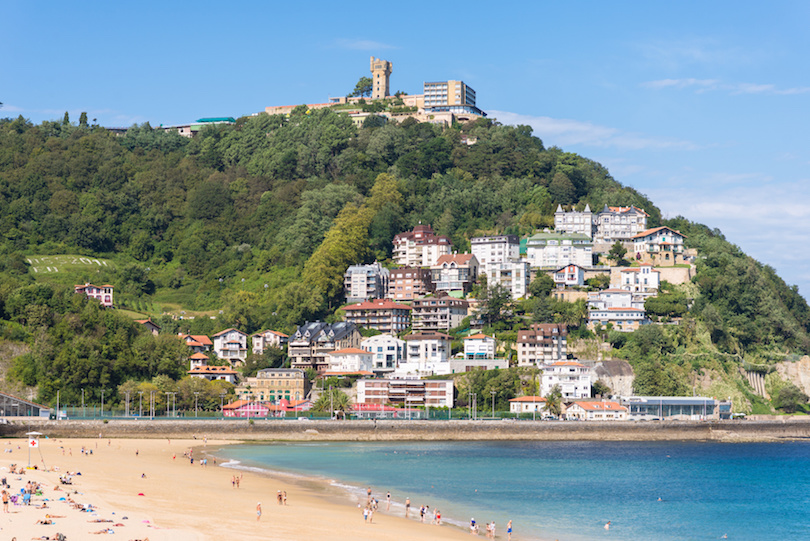
San Sebastian has a beautiful coastline with three incredible beaches. Of them, Ondarreta Beach might be the least visited, but it is the most serene, peaceful and relaxing destination. In the 19th century, this beach was a popular bathing spot for the city’s aristocracy. Its fine golden sands and calm waters offer a tranquil atmosphere compared to its bustling neighbor, La Concha Beach.
Visitors to Ondarreta Beach can enjoy a variety of water sports, including swimming and kayaking. The iconic Monte Igueldo also flanks the beach, offering breathtaking panoramic views of the Bay of Biscay. Whilst on the sand, look out for Miramar Palace, a neoclassical former royal residence surrounded by manicured gardens that add to its charm.
16. Aiete Park
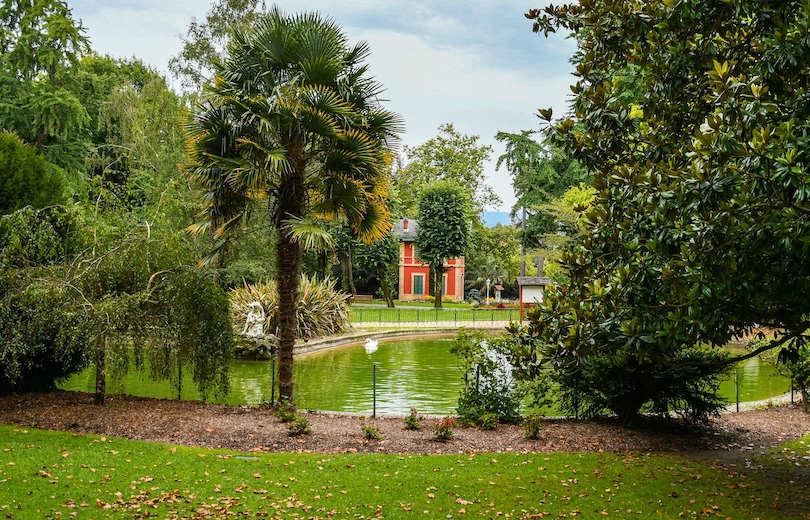
Aiete Park is an expansive urban park where locals come to relax and enjoy the beauty of a green space.
In the past, Aiete Park was the site of the Aiete Palace, a former royal residence, and played a significant role in the city’s history. During the 19th century, it served as a diplomatic meeting place during the Aiete Peace Conference, which aimed to end the First Carlist War – symbolizing peace and diplomacy.
Today, Aiete Park offers visitors beautifully manicured gardens, winding walking paths, and stunning viewpoints that provide breathtaking views of San Sebastian and the Bay of Biscay. Visitors can explore the meticulously maintained rose garden, tour the palace, or relax in the shade of the towering trees.
15. Catch a Ferry to Isla de Santa Clara
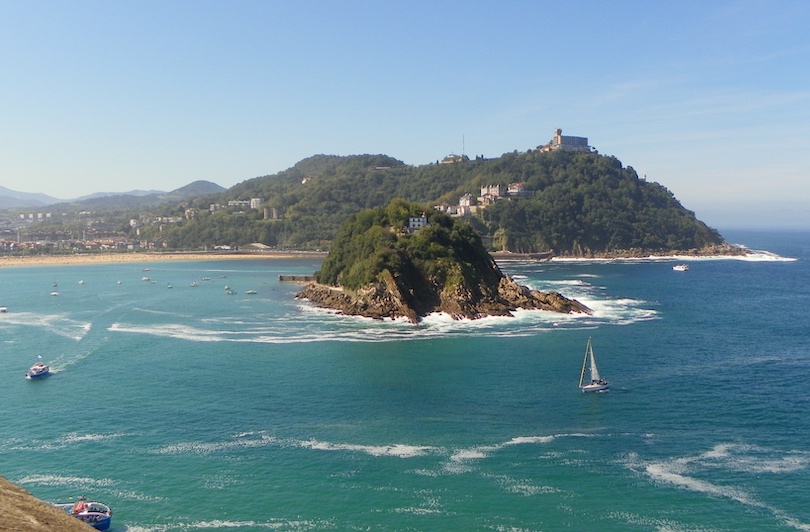
During your visit to San Sebastian, consider taking a ferry to Isla de Santa Clara. Doing this will allow you to explore one of the Basque Coast’s most stunning natural gems.
Isla de Santa Clara is a small, uninhabited island in the Bay of San Sebastian, just off the city’s shoreline. The ferry ride to the island usually departs from the Port of San Sebastian and offers breathtaking views of the city’s picturesque coastline. The journey only takes a few minutes, so it’s an accessible activity for visitors of all ages.
Once you arrive at Isla de Santa Clara, you’ll find a peaceful paradise with a pristine beach, crystal-clear waters and no permanent structures. So, it’s a terrific place to go for a digital detox.
14. San Telmo Museum
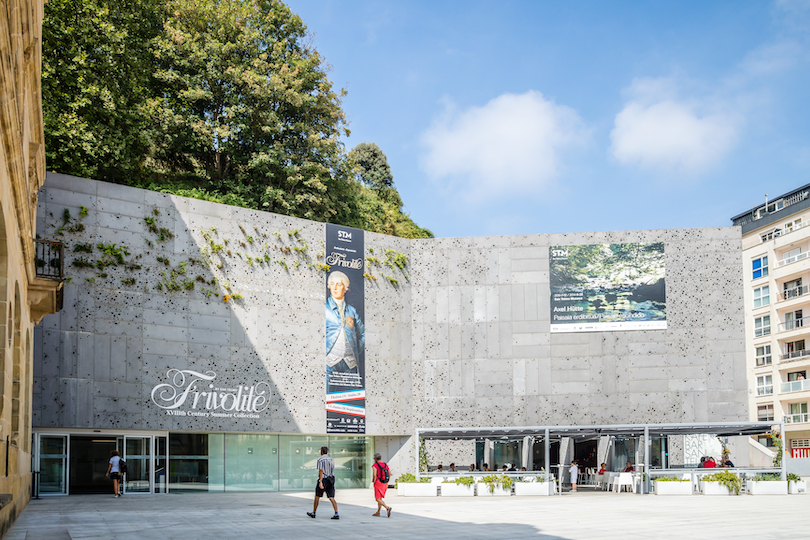
A visit to the San Telmo Museum is recommended for those wanting to learn more about the Basque Country’s rich cultural heritage. Housed in a meticulously restored 16th-century Dominican convent, this museum blends history, art, and innovation. Its diverse exhibits reflect the region’s fascinating past, from prehistoric times to the contemporary era, through an impressive collection of Basque art.
This collection includes paintings, sculptures, and decorative arts, which provide insights into the evolution of regional artistic expression.
One of the museum’s highlights is the ethnographic section, which delves into the Basque people’s traditions, customs and daily life. Additionally, interactive displays and multimedia presentations offer an immersive learning experience. While San Telmo Museum also regularly hosts temporary exhibitions, thus ensuring there’s always something new to discover.
13. Peine del Viento
One of the most famous tourist attractions is the Peine del Viento. The sculpture was created by Eduardo Chillida, a prominent Basque sculptor and is a unique installation that blends art and nature seamlessly. The three large steel sculptures were installed in 1976 and are anchored into the rocks, facing the wild waters of the Bay of Biscay.
They are visually striking and a testament to the power of nature, as the waves crashing against them create a mesmerizing display of spray and sound.
Visitors can walk along a promenade leading to the Peine del Viento, where they can get up close to the sculptures and feel the raw energy of the sea. It’s a popular spot for photographers, artists and anyone seeking a moment of contemplation amidst the dramatic coastal landscape.
12. Trip to Hondarribia
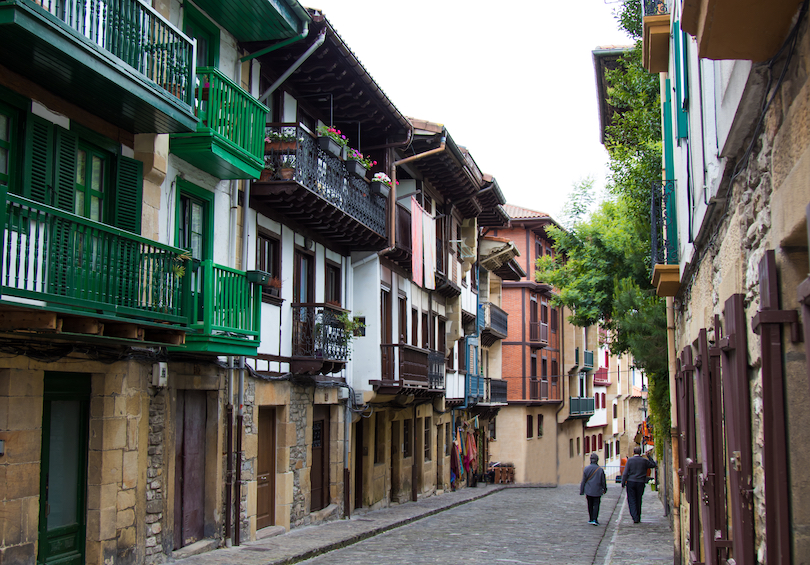
A visit to Hondarribia is another excellent side trip you can do from San Sebastian. Located just a short drive or bus ride from San Sebastian, Hondarribia is a pleasant coastal town with a captivating blend of medieval architecture, picturesque landscapes, and delicious cuisine.
As soon as you arrive, the Old Town will instantly seduce you with its maze of narrow cobblestone streets, colorful Basque-style houses, and historic fortifications. You’ll also want to explore the Castle of Charles V, dating back to the 15th century, which presides over the area atop a hill. Once there, you can drink in spectacular panoramic views of the surrounding area.
Another reason for visiting Hondarribia is its exceptional culinary scene. Like San Sebastion, the area has several outstanding pintxo bars and seafood restaurants for you to dine at.
11. Cristina Enea Park
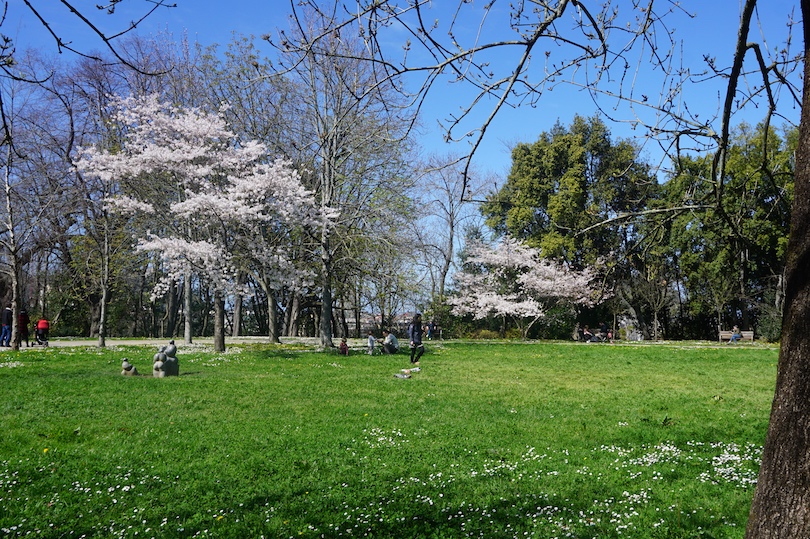
Cristina Enea Park is a beautiful park named after Cristina Enea, a 19th-century philanthropist. On her death, she bequeathed her estate to the city to create a green haven for its residents.
The park opened to the public in the late 20th century and has since become a green space synonymous with peace and serenity. It comprises diverse landscapes, including manicured gardens, wooded areas and a lazy, meandering river. Overall, it’s a perfect spot for leisurely walks, picnics, or simply unwinding amidst nature’s beauty.
The park also features sculptures, art installations and educational exhibits, adding an artistic touch to the green surroundings. Despite its popularity, it always has an air of harmony about it.
10. Buen Pastor Cathedral
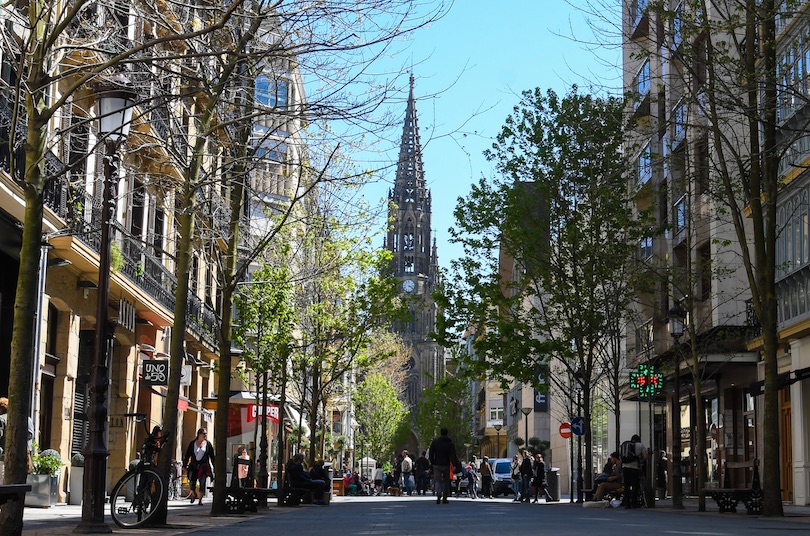
The Buen Pastor Cathedral is well worth visiting for those who enjoy checking out religious structures. A stunning example of neo-Gothic architecture, it symbolises the region’s devotion and artistic excellence.
Its construction began in 1888 to accommodate the growing population of San Sebastian. The intricate design of the cathedral reflects the popular neo-Gothic style of the late 19th century. It features ornate sculptures adorning its façade and soaring arches, stained glass windows and an impressive organ within.
The best way to explore the interior is on a guided tour. You’ll learn a lot more about the cathedral that way. If you are lucky and your visit coincides with a concert or religious ceremony, you will also be in for a spine-tingling experience.
9. La Zurriola
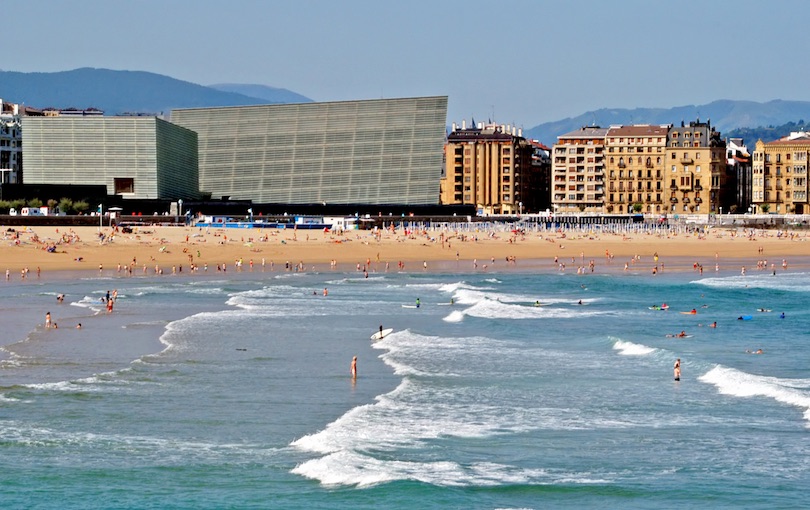
While Ondarreta is more tranquil, La Zurriola Beach is the opposite. A popular destination due to its energetic atmosphere and excellent surfing conditions, this beach has a lively vibe that attracts a younger crowd.
La Zurriola has a reputation for being a prime place in Europe to ride the waves. It offers consistent swell, making it an ideal location for beginners and experienced surfers. If you are a beginner or relative novice, surf schools and equipment rental shops line the promenade, allowing you to catch your first wave or improve your skills.
Aside from surfing, La Zurriola Beach is a great place to sunbathe, people-watch, or take in the stunning views of Monte Ulía and Monte Urgull. The beachfront is also dotted with bars, restaurants, and beach clubs, making it a vibrant spot for local cuisine and nightlife.
8. Plaza de la Constitucion
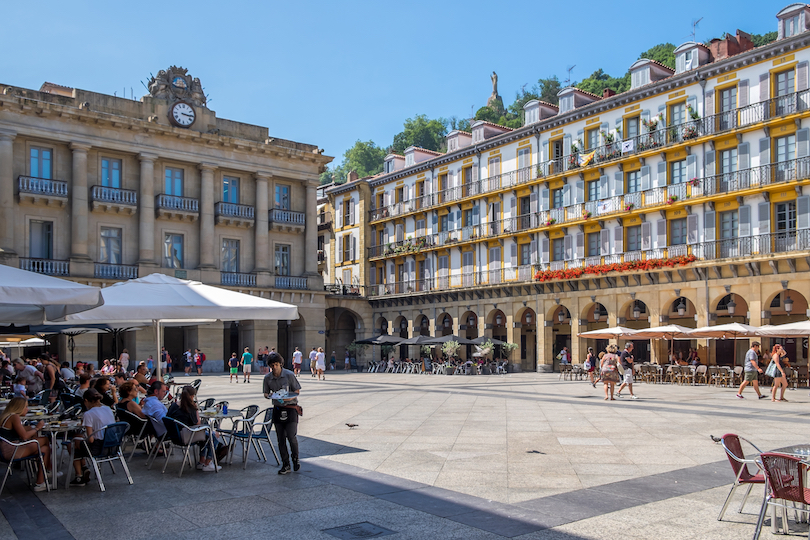
Plaza de la Constitucion, in the heart of San Sebastian’s Old Town, is a historic and lively square that serves as a central gathering place for locals and tourists. This iconic plaza has a rich history dating back to the 19th century when it was originally named Plaza Nueva.
One of the most distinctive features of Plaza de la Constitucion is its unique numbered balconies that adorn the surrounding buildings. These balconies were once used as seating for spectators during bullfights, festivals, and other public events.
Surrounded by cafes, pintxo bars, and shops, the square is a hub of activity day and night. Overall, it’s a wonderful place to enjoy a meal, sip a coffee, or soak in its lively atmosphere.
7. Miramar Palace
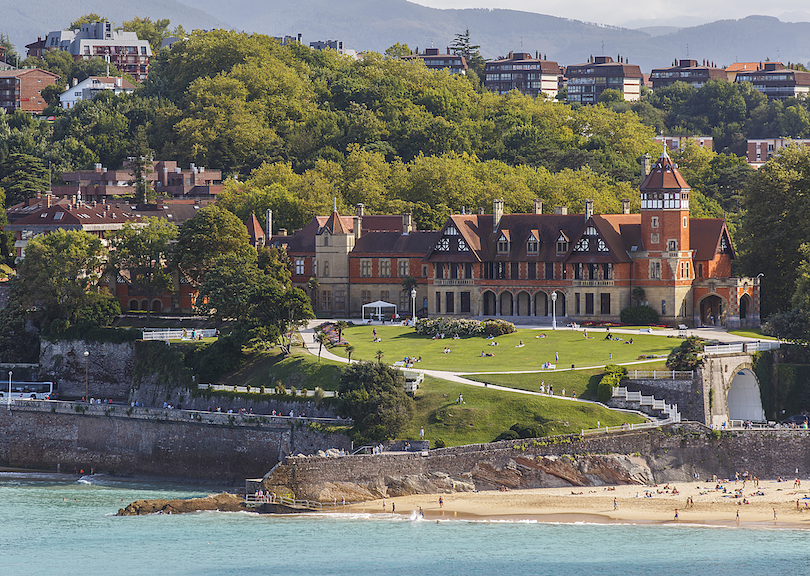
While in San Sebastian, take the opportunity to discover the grandeur of Miramar Palace, a historical landmark that offers a glimpse into the city’s aristocratic past. This architectural masterpiece was built in the late 19th century as a royal residence and is surrounded by lush gardens that provide panoramic views of the Bay of Biscay.
The palace’s fascinating history is inextricably linked to Spain’s monarchy, as it was once the summer residence of Queen Maria Cristina. Its architectural style blends neo-Gothic and neo-Renaissance elements, making it an elegant and photogenic destination.
Although the palace’s interior is not open to the public, visitors can explore the beautifully landscaped gardens and impressive facade. The gardens are meticulously maintained, featuring walking paths, fountains and sculptures that create a serene ambience that invites personal reflection.
6. Take the Funicular up Monte Igueldo
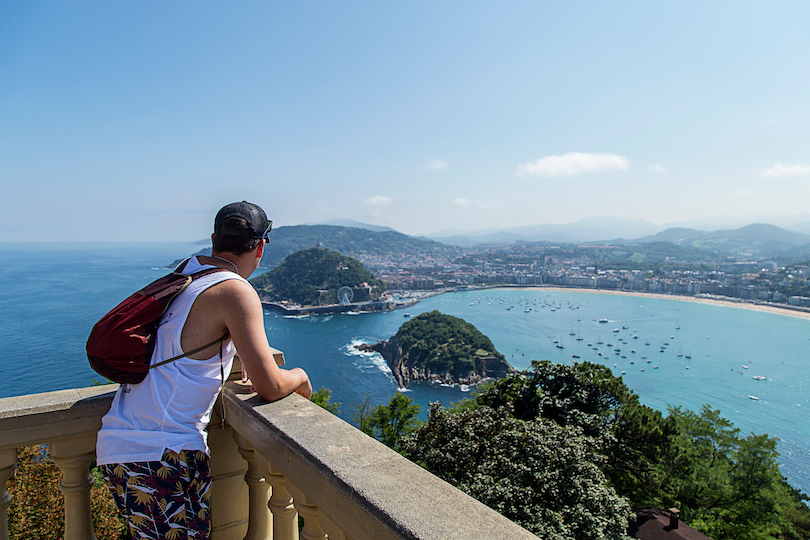
Taking the funicular up Monte Igueldo in San Sebastian is a must-do experience for visitors seeking breathtaking panoramic views and a dash of nostalgia. This charming funicular railway has been in operation since 1912.
It carries passengers from the base of Monte Igueldo to its summit with picturesque vistas of the Bay of Biscay, the city’s iconic beaches, and the surrounding lush landscapes. The short ride is an adventure in itself, offering a glimpse into the city’s bygone era. Once at the top, visitors will find an old-fashioned amusement park that adds to the vintage charm.
Whether enjoying the timeless attractions, savoring a meal with a view at the hilltop restaurant, or simply taking in the awe-inspiring scenery, a trip on the funicular is unforgettable.
5. San Sebastian Aquarium
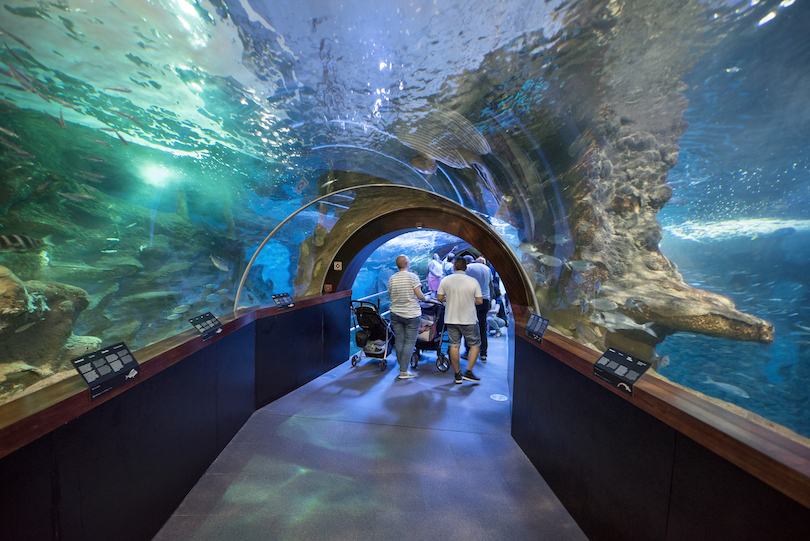
The San Sebastian Aquarium is a fascinating marine facility overlooking the picturesque La Concha Bay. Established in 1928, it stands as one of the oldest and most celebrated aquariums in Europe, showcasing the rich marine life of the Bay of Biscay.
Visitors to the aquarium get taken on an immersive journey beneath the sea’s surface. The facility houses diverse aquatic species, including sharks, rays, sea turtles, and a wide variety of fish, providing educational and awe-inspiring experiences for all ages.
One of its most notable features is the underwater tunnel. It allows visitors to walk through a submerged glass corridor surrounded by marine life, offering an unparalleled perspective of the underwater world. The San Sebastian Aquarium is also dedicated to marine conservation and education, making it a valuable resource for learning about the region’s coastal ecosystems and biodiversity.
4. Pintxos Crawl
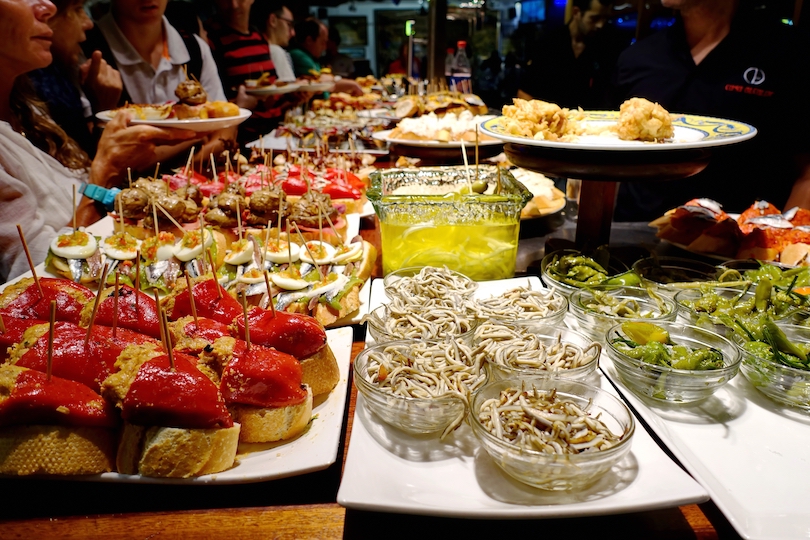
You can’t visit San Sebastian and not partake in a pintxos crawl – a culinary adventure like no other. Pintxos, pronounced ‘peen-chos’, are small, delectable snacks that have become a beloved Basque tradition. The history of pintxos dates back to the 19th century when they were used to cover drinks to prevent flies from landing in them.
Over time, these simple morsels evolved into an art form, with chefs competing to create the most exquisite and inventive combinations of flavors.
The concept of a pintxos crawl involves hopping from one pintxos bar to another, savoring a different bite-sized delight at each stop. San Sebastian is renowned for its thriving pintxos scene, with bars offering an enticing array of these culinary delights. From traditional options like jamón serrano and croquetas to more avant-garde creations, there’s something to please every palate.
3. Monte Urgull
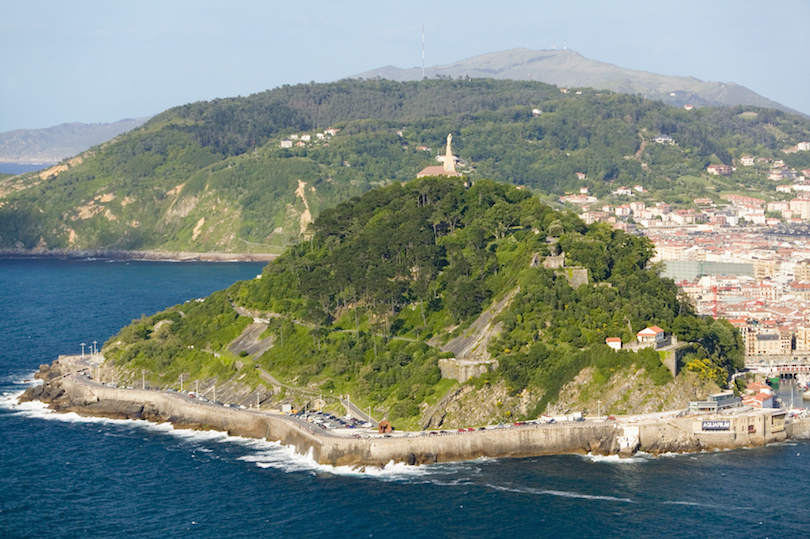
Monte Urgull, a majestic hill that rises from the heart of San Sebastian, offers a captivating blend of history, nature and panoramic vistas. Steeped in centuries of heritage, it is a must-visit destination for travelers seeking a deeper understanding of the city’s past and breathtaking landscapes.
Historically, Monte Urgull has served as a defensive stronghold and remnants of its fortifications, including cannons and walls, still stand today. The hill was crucial in protecting San Sebastian from invasions and is home to the Castillo de la Mota. This 12th-century fortress now houses a small museum, providing insight into the city’s maritime history.
The ascent to Monte Urgull is scenic, with well-marked trails leading through lush greenery. At the summit, visitors are rewarded with unparalleled views of San Sebastian, its stunning coastline and the surrounding hills.
2. Parte Vieja
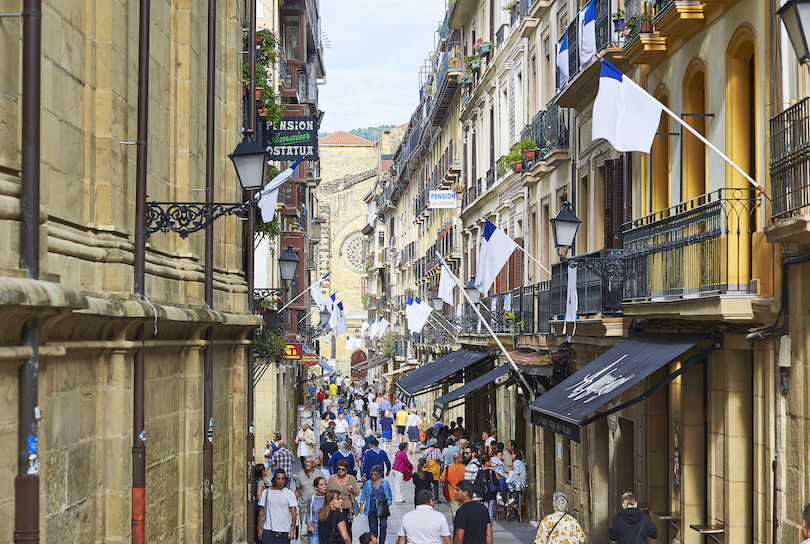
Parte Vieja, the Old Town of San Sebastian, is a vibrant and historic neighborhood that encapsulates the essence of this charming coastal city.
This picturesque district dates back to medieval times and is a delightful maze of narrow streets and colorful buildings. Its history reflects its well-preserved architecture, with centuries-old buildings and charming plazas. One of its highlights is the Plaza de la Constitucion, known for its unique numbered balconies that once served as seating during bullfights and festivals.
Wandering through the Old Town’s atmospheric streets, you’ll discover boutiques, craft shops, and vibrant squares where locals and tourists converge. Parte Vieja is also renowned for its culinary scene, boasting numerous pintxos bars where you can savor the flavors of the Basque Country.
1. La Concha
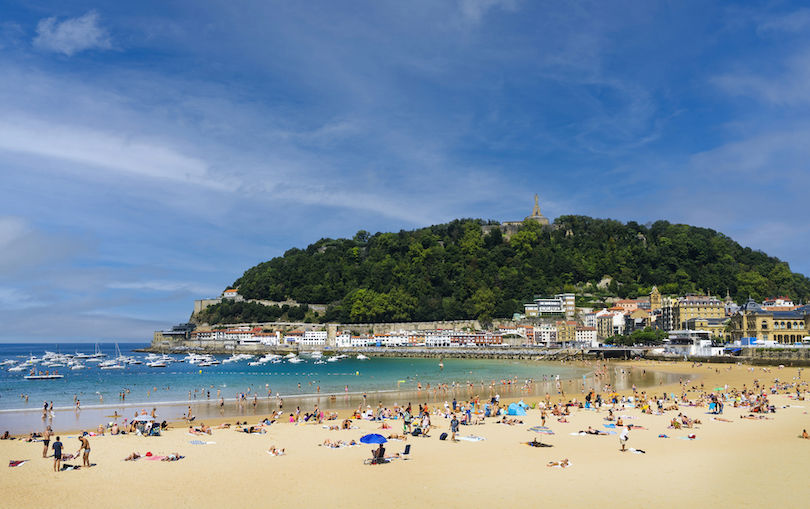
La Concha, often hailed as one of Europe’s most beautiful urban beaches, is the crown jewel of San Sebastian. This stunning stretch of golden sand forms a crescent shape, flanked by the dramatic Monte Urgull and Monte Igueldo, providing a picturesque backdrop.
La Concha’s calm, crystal-clear waters make it an ideal spot for swimming, sunbathing, and water sports, while the scenic promenade along the beach invites leisurely strolls.
Surrounding the beach are elegant belle-époque buildings, including the renowned La Perla spa, which has been pampering visitors for over a century. Additionally, the Alderdi Eder Gardens, with their colorful flowerbeds and sculptures, offer a tranquil retreat adjacent to the beach.
Ultimately, La Concha’s charm extends beyond its natural beauty; it’s where locals and visitors come together to enjoy the Basque sun, sea, and social atmosphere.
Best Time to Visit San Sebastian
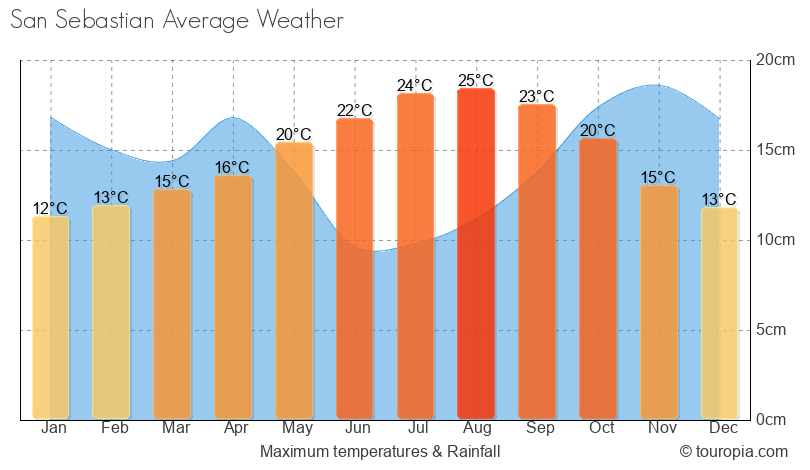
The temperatures are highest and sea water warmest, the summer months of July and August are when most people visit San Sebastian. Popular events like its Jazz Festival and all the exuberant celebrations for Aste Nagusia only draw in more crowds.
Averages of 24°C (75°F) are perfect for sunbathing, swimming and surfing though its pretty beaches do get quite full. The prices and crowds remain high into September as fun events like the Basque Festival, San Sebastian Film Festival and Bandera de la Concha regatta take place.
Slightly quieter and much cheaper are the still sunny, warm months of April, May, June and October. Spring is just a bit too cold to comfortably swim or sunbathe, though temperatures are ideal for sightseeing. The spring months and October also see a lot of rain with summer really only being the relatively dry season of the year.
From November to March is the low season with the worsening weather putting most people off. High points during this colder period include both its traditional Three Kings Parade and San Sebastian Day in January.

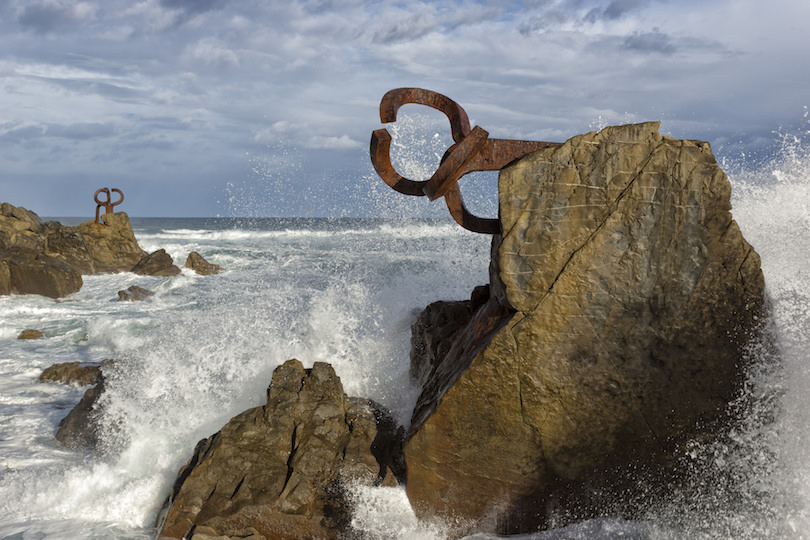
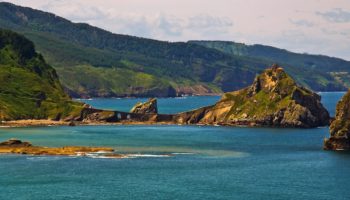
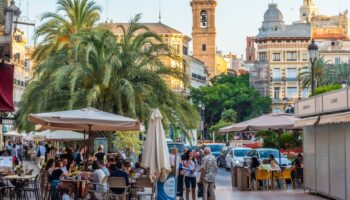
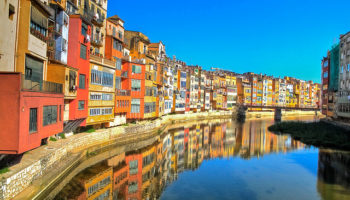
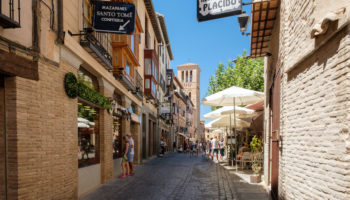
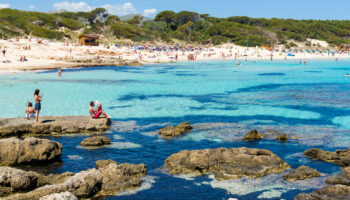

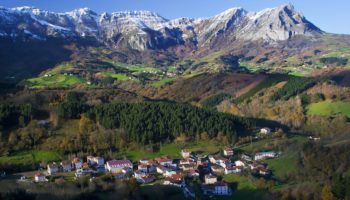
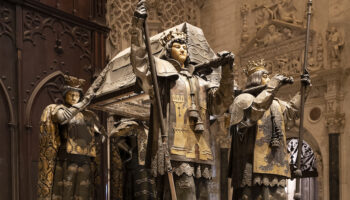
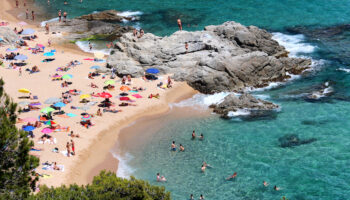
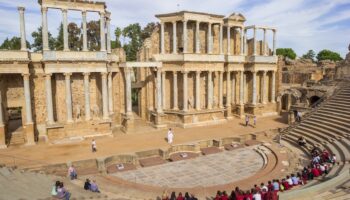
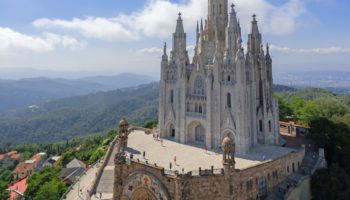
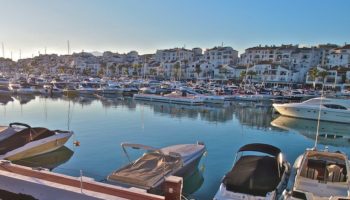
Great city San Sebastian. I do recommend if you visit this city to go around in the Area Rioja and its wine is about 2 hours road trip. Biarritz is 60 km away, you cannot miss it, surely one of the nicest seaside destinations of France. San sebastian has also a very nice seaside beach for surfers, check Mutriku.